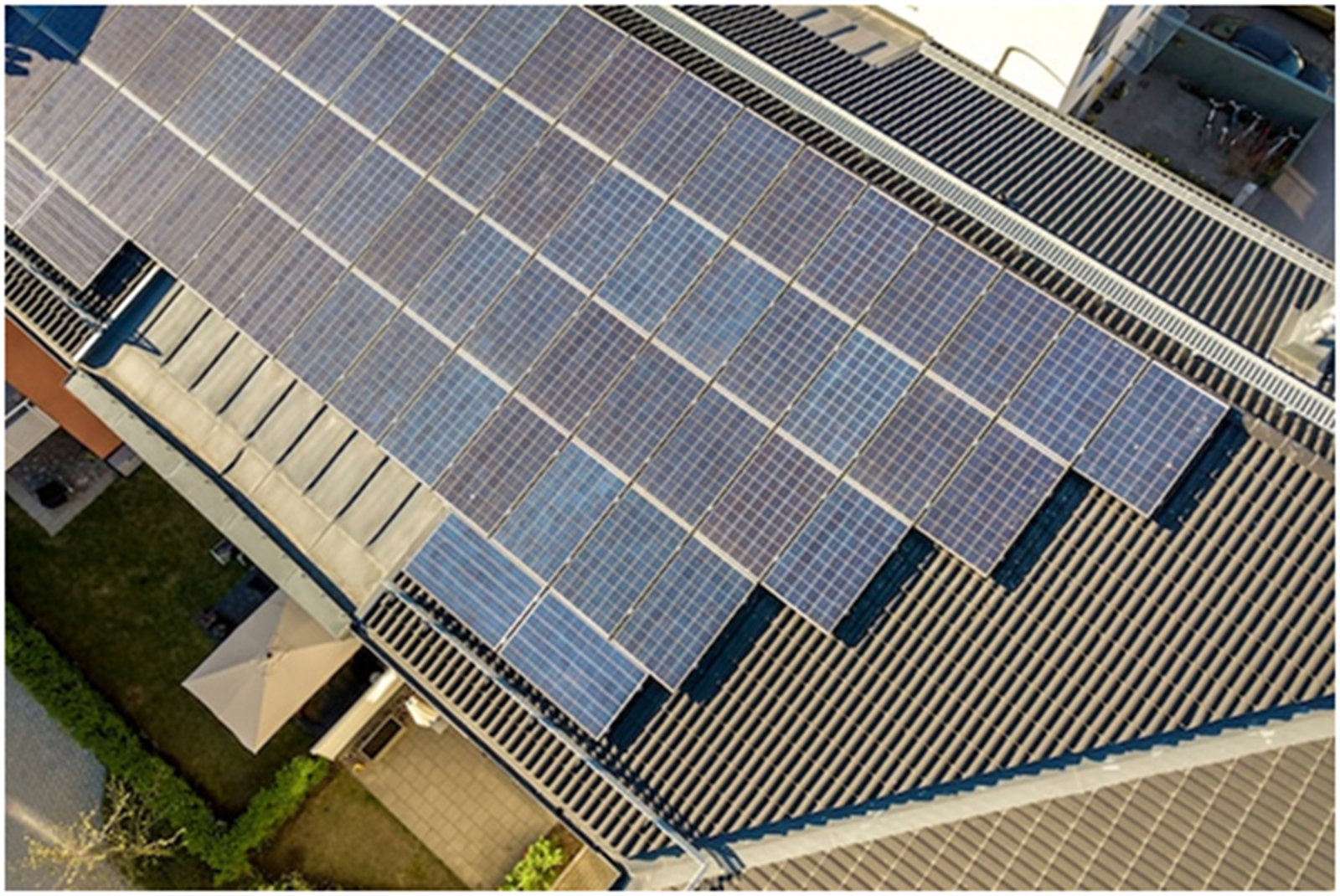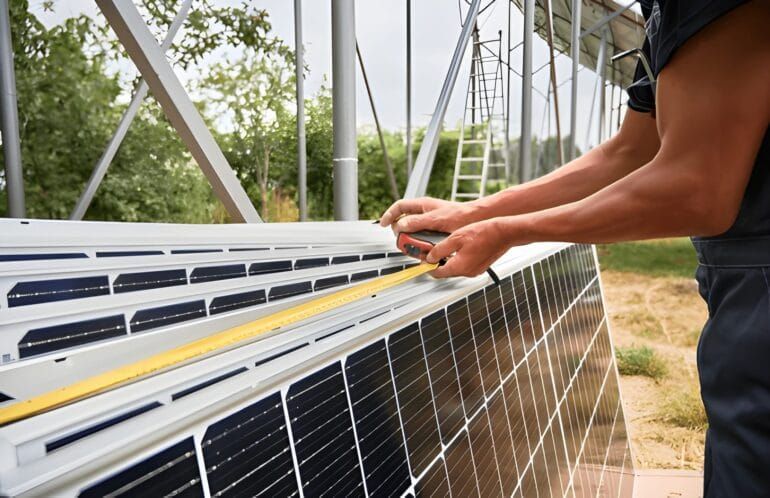When you buy a home, there are some things you see and some things you don’t. Unless you’re an expert in the field, it can be difficult to know if your home has a substandard rooftop or Rooftop Solar PV. However, there are a few indicators that point to substandard conditions. If you have any of these red flags, it may be time to upgrade your Rooftop Solar PV system. If your home was built before 1978 it could have lead-based paint, asbestos, or other hazardous materials. These can be extremely dangerous for your health and also make it impossible for you to install solar panels on the roof without major renovations first. Even if your home doesn’t fall into any of these categories, there are still plenty of reasons why upgrading your rooftop solar PV system would be wise.
Your Roof is Falling Apart
If your home’s rooftop is falling apart, it’s not just your house that’s in danger. Falling shingles can cause damage to your solar panels. Even worse, they can fall onto the ground and damage any passersby or cars below.
If you have large patches of missing shingles, missing pieces, or small holes and cracks, you’ll likely have leakage issues. Any water that gets into your rooftop can create serious issues for your solar panels.
You might have to replace them and be without power for a while. It’s best to have your rooftop inspected before installing solar panels. If you find any problems, they can be fixed before you install your solar panels.
While your rooftop may look fine, it’s important to keep in mind that the condition of your roof only reflects the state of your shingles.
The underlying structure of your roof will also impact how well solar panels will work. If your roof has gotten old, it may not be able to support the weight of solar panels.
Your Rooftop is Dark or Tepid Grey
If your rooftop is already dark or tepid grey, it means that it’s facing north, south, or east. This is an ideal condition for your solar panels because it means that there’s plenty of sunlight for them to collect all year round.
If there are large, open patches on your rooftop that are tepid grey, you have plenty of space to install solar panels. If you have a large, open patch but it’s a dark colour, your roof isn’t ideal for solar panels.
However, you may still be able to install solar panels, it may just be a little more challenging. If there are sections of your roof that are tepid grey, but the rest is a dark colour, you may want to find a way to bring that dark colour up to match the rest of the roof.
There are a few ways you can do this. You can paint the rooftop with a dark colour or add a dark tarp to block out the sun.
You can also add a light-blocking shade fabric to the section of the roof that’s already tepid grey. Keep in mind that you want your dark colour to match the rest of your rooftop as closely as possible.
You Have No Dark Exposure or Sunlight
If your roof doesn’t face any direction that gets sunlight, you’re going to have a really hard time installing solar panels. Other than finding a new rooftop, the best thing you can do is to add light-blocking shades to your current rooftop.
Shade fabrics, tarps, or paint can be used to block out the sun, turning a light roof into a dark roof. Even if your roof never gets direct sunlight, it still gets a certain amount of light exposure.
You can use a light-metering device to find out exactly how much light your roof gets. If your roof gets less than eight hours of sunlight per day, it’s not the best for solar panels.
However, it can still be used for solar panels. It just means that you’ll need to add shade fabrics to block out the light.
There Are Electric Outlets on the Roof
If your home has a history of electrical issues or has been around for a while, you may have outlets on your rooftop. Many homeowners have had to install rooftop outlets because their homes weren’t wired adequately for electricity.
This can create a problem for solar panels since there’s not enough space for them. You can fix this by removing the rooftop electrical outlets and installing a new electrical box.
This box should be located near the edge of your rooftop, where the solar panels will be installed. If there are already solar panels on your rooftop, they’ll need to be removed and relocated to make room for the new electrical box.
You Can Hear Constant Humming Noise When You’re Inside
If your rooftop is close to a source of water, such as a river or lake, you may hear a constant humming noise when you’re inside. This humming noise is caused by vibrations caused by the water.
You can take steps to reduce the vibrations by adding acoustic tiles to your rooftop. You can also switch your rooftop from a metal surface to a non-metallic material, such as concrete or asphalt.
Alternatively, you can relocate the source of water to a different location. Metal rooftops can cause electromagnetic interference with rooftop solar panels.
If your roof is metal, you can reduce this by adding a layer of non-conductive material between the metal roof and the solar panels, like a layer of rubber. You can also relocate the solar panels away from the metal roof.
You Can See Bird Poop on Rooftop Solar PV
If your rooftop has bird droppings on it, it means that birds like to sit and nest on your rooftop. The best way to deal with this is to add a layer of rubber between the birds and the rooftop.
Unfortunately, this might mean that you have to remove the solar panels to install the rubber. You can install a rubber mat over the existing solar panels, or you can simply remove them, replace them with new panels, and then install the rubber after that.
If the droppings have caused damage to the rooftop, you may need to replace the rooftop entirely. You may also need to replace any damaged solar panels.
Conclusion
Rooftops are an excellent place to install rooftop solar PV systems, but they aren’t all created equal. Rooftops made of metal, asphalt shingles, or concrete are all good surfaces for solar panels.
Other surfaces, such as a wooden roof, aren’t ideal for solar panels. If you want to install rooftop solar PV systems, you should make sure that your rooftop is an ideal surface for solar panels.
If your rooftop isn’t ideal, you can take steps to make it suitable, such as installing solar panels on the roof or installing acoustic tiles or rubber to reduce vibrations.
FAQ’s
Q: What is a rooftop solar PV system?
A: A rooftop solar PV (photovoltaic) system is a renewable energy system that harnesses sunlight and converts it into electricity. It consists of solar panels installed on the roof of a building, an inverter to convert the generated DC power into usable AC power, and other necessary components for safe and efficient operation.
Q: How long does a rooftop solar PV system typically last?
A: Rooftop solar PV systems are designed to be durable and long-lasting. On average, they have a lifespan of 25 to 30 years. However, the actual lifespan can vary depending on factors such as system quality, maintenance, and environmental conditions.
Q: What are the signs that it’s time to upgrade a rooftop solar PV system?
A: Here are six signs that indicate it may be time to upgrade your rooftop solar PV system:
- Decreased Performance: If you notice a significant decrease in your system’s energy production compared to when it was first installed, it may be a sign of aging panels or other system components that need upgrading.
- Outdated Technology: If your solar panels and other system components are outdated, upgrading to newer technologies can provide higher efficiency, better performance, and improved reliability.
- System Damage: Severe weather events or other unforeseen circumstances can cause damage to your rooftop solar PV system. If you notice physical damage or malfunctioning components, it may be necessary to upgrade or replace them.
- Energy Needs Have Increased: If your energy consumption has increased since the installation of your rooftop solar PV system, upgrading to a larger capacity system or adding additional panels can help meet your growing energy needs.
- Inefficient Inverter: Inverters are an essential component of a solar PV system, converting DC power into AC power for use in your home or building. If your inverter is outdated, inefficient, or experiencing frequent failures, upgrading to a newer model can improve overall system performance.
- Expired Warranty: If your solar PV system’s warranty has expired, it may be a good time to consider upgrading. Upgrading to a new system will not only provide you with a new warranty but also take advantage of the latest advancements in technology.
Q: Can I upgrade my rooftop solar PV system without replacing the entire system?
A: In some cases, it may be possible to upgrade specific components of your rooftop solar PV system without replacing the entire system. For example, upgrading to higher-efficiency panels or a more advanced inverter can improve system performance without a complete overhaul.
Q: How much does it cost to upgrade a rooftop solar PV system?
A: The cost of upgrading a rooftop solar PV system can vary depending on the specific upgrades required, the size of the system, and other factors. It is recommended to consult with solar installation professionals to assess your system and provide a customized cost estimate.







